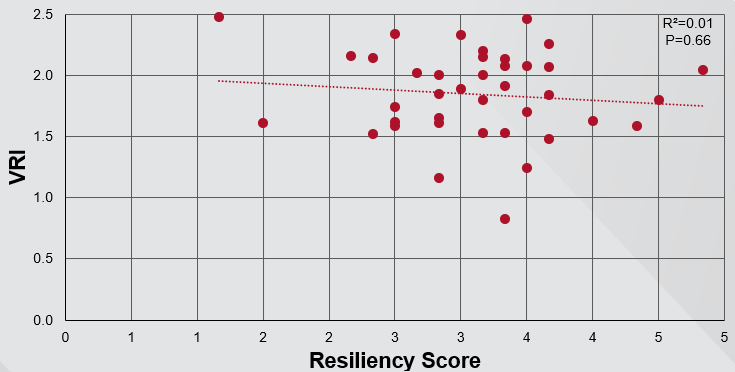Cardiology
Session: Cardiology 1
149 - Vascular reactivity index is not associated with risk factors for poor cardiovascular health
Monday, May 6, 2024
9:30 AM - 11:30 AM ET
Poster Number: 149
Publication Number: 149.3158
Publication Number: 149.3158

Rebecca Slotkowski, BS (she/her/hers)
Ph.D. Candidate
University of Nebraska Medical Center
Papillion, Nebraska, United States
Presenting Author(s)
Background: Cardiovascular disease is the leading cause of death for women in the United States. Risk factors for poor cardiovascular health begin accumulating in childhood and early identification and intervention for subclinical cardiovascular disease during adolescence could prevent future cardiovascular morbidities and mortality. The vascular reactivity index (VRI) is a non-invasive measure of endothelial function which may identify asymptomatic women at risk for future cardiovascular complications.
Objective: VRI correlates well with more invasive measures of cardiovascular health in adults, but it is not known whether VRI could identify subclinical cardiovascular disease in adolescent girls. This study will address this gap in knowledge by investigating the relationship between VRI and risk factors for poor cardiovascular health in adolescent girls, including inadequate diet, high stress levels, lack of exercise, and obesity.
Design/Methods: The Endothelix VENDYS® was used to measure VRI and blood pressure in 12–18-year-old girls (N=46). A VRI above 1.6 represents good endothelial function and below 1.4 is considered poor endothelial function. Participants completed three 24-hour dietary recalls (ASA24), and average fat (total, saturated, and cholesterol) intake was calculated (N=29). The Brief Resilience Scale (BRS) was used to measure emotional resiliency (N=44) and the Godin-Leisure Time Exercise Questionnaire (GLTEQ) to measure physical activity (N=43). BMI was calculated from self-reported height and weight (N=35). Spearman correlations were utilized to assess the relationship between VRI and cardiovascular risk factors.
Results: Median VRI was 1.85 (IQR 1.60-2.14), which represents good endothelial function. There were no significant correlations between VRI and exercise level (p=0.98) or emotional resiliency (p=0.66). Additionally, VRI was not correlated with dietary intake of total fats (p=0.68), cholesterol (p=0.32), saturated fat (p=0.53), or polyunsaturated fat (p=0.87). Similarly, there was no significant correlation between VRI and BMI (p=0.89). However, BMI was positively correlated with systolic (rs=0.47, p=0.006) and diastolic (rs=0.36, p=0.04) blood pressure.
Conclusion(s): There was no significant correlation between VRI and cardiovascular risk factors for adolescent girls, which suggests that VRI may not be a helpful tool to assess subclinical cardiovascular health in this population. Future studies should assess whether biological markers of cardiovascular health, such as blood cholesterol levels, are correlated with VRI in adolescents.

.png)
.png)
